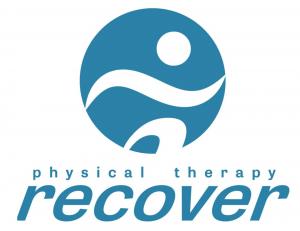Managing Migraines: Physical Therapy Approaches for Lasting Relief
Migraines are complex, and their triggers can vary widely. ”
SLIDELL, LA, UNITED STATES, October 11, 2024 /EINPresswire.com/ -- Migraines are a debilitating condition that can disrupt daily life, affecting everything from work performance to personal well-being. While migraines are often managed through medication, many are turning to physical therapy as an effective way to achieve lasting relief from the symptoms. By addressing underlying musculoskeletal issues and promoting relaxation techniques, physical therapy offers a comprehensive approach to managing migraines.— Chaise Bennett
Chaise Bennett, owner of Recover Physical Therapy in Slidell, Louisiana, stresses the importance of a multidisciplinary approach when addressing migraines. "Migraines are complex, and their triggers can vary widely. By incorporating physical therapy into the treatment plan, it is possible to reduce the frequency and intensity of migraine attacks, particularly for individuals who have contributing musculoskeletal factors."
Understanding the Musculoskeletal Connection
Migraines can stem from a variety of triggers, including stress, hormonal changes, sensory stimuli, and musculoskeletal issues. For many migraine sufferers, physical tension in the neck, shoulders, and upper back can exacerbate or even trigger migraine episodes. Physical therapy aims to address these contributing factors, focusing on muscle imbalances, poor posture, and joint dysfunctions that can lead to chronic headaches.
One of the primary ways physical therapy aids in migraine management is by identifying and treating musculoskeletal problems that place strain on the head, neck, and spine. Tight muscles, joint restrictions, or poor alignment can create tension in the body that may provoke or intensify migraines.
"Many individuals with migraines experience tightness in the muscles of the neck and shoulders, often without realizing it. Physical therapy works to release this tension, improve posture, and restore normal movement patterns, all of which can help reduce the occurrence of migraine episodes," explains Bennett.
Common Musculoskeletal Causes of Migraines
There are several musculoskeletal issues that can contribute to migraines, many of which can be addressed through physical therapy:
Tension in the Neck and Shoulders: Poor posture, stress, or repetitive movements can cause muscle tension in the neck and shoulders. This tension can trigger tension headaches, which may develop into migraines.
Cervical Joint Dysfunction: Misalignments or restricted movement in the cervical spine (the neck) can irritate nerves and muscles, leading to headaches or migraines.
Temporomandibular Joint (TMJ) Dysfunction: Problems with the jaw joint, or TMJ, can cause muscle tension and pain that radiates to the head, often leading to migraines.
Poor Posture: Poor posture places excessive strain on the muscles and joints of the neck and upper back, contributing to muscle fatigue, tension, and headaches.
Physical Therapy Techniques for Managing Migraines
Physical therapy offers a range of techniques designed to reduce migraine frequency and severity by addressing the musculoskeletal factors that contribute to them. A customized treatment plan can be developed based on the individual's specific needs and migraine triggers. Below are some of the common physical therapy approaches used to manage migraines:
Manual Therapy
Manual therapy involves hands-on techniques designed to manipulate soft tissues and joints, relieving tension and restoring normal movement patterns. For individuals suffering from migraines, manual therapy can be particularly effective in reducing tension in the neck, shoulders, and upper back. Techniques such as soft tissue mobilization, myofascial release, and joint mobilization can relieve pressure on nerves and muscles, decreasing the likelihood of migraine attacks.
Postural Training
Improving posture is a key component of preventing musculoskeletal-related migraines. Physical therapists can assess an individual's posture and recommend corrective exercises and adjustments to alleviate strain on the neck and spine. By teaching patients how to maintain proper alignment throughout daily activities, postural training helps prevent muscle fatigue and tension that can trigger headaches.
Stretching and Strengthening Exercises
Specific exercises to stretch and strengthen the muscles of the neck, shoulders, and upper back are essential for maintaining flexibility and reducing tension. Stretching exercises help lengthen tight muscles that may contribute to migraines, while strengthening exercises improve the stability of the spine and neck, helping to prevent muscle strain and dysfunction. A physical therapist can develop a customized exercise program based on the individual's unique needs and limitations.
Relaxation Techniques
Stress is a known trigger for many migraine sufferers. Physical therapists often incorporate relaxation techniques into treatment plans to help reduce the stress and muscle tension that can lead to migraines. Techniques such as deep breathing exercises, progressive muscle relaxation, and guided imagery may be recommended to promote relaxation and reduce the physical impact of stress on the body.
Ergonomic Adjustments
For individuals whose migraines are related to workplace posture or repetitive strain, ergonomic adjustments can play a significant role in reducing symptoms. Physical therapists can recommend changes to an individual's workstation, such as adjusting the height of a computer monitor or chair, to reduce strain on the neck and back. Proper ergonomics can prevent the development of tension that contributes to migraines.
Cervical and TMJ Treatment
Migraines that are linked to cervical spine dysfunction or TMJ issues can be effectively managed through targeted physical therapy techniques. Joint mobilization and manual therapy can help correct cervical spine alignment, while specific exercises and treatments can address TMJ dysfunction. By reducing the strain on these areas, individuals can experience relief from migraine symptoms.
Benefits of Physical Therapy for Migraine Management
Physical therapy offers several benefits for individuals managing migraines. One of the key advantages is the ability to address the root causes of musculoskeletal tension and dysfunction, rather than simply treating the symptoms. By focusing on the physical factors that contribute to migraines, physical therapy helps reduce the frequency and severity of migraine attacks over time.
In addition to improving musculoskeletal health, physical therapy promotes overall well-being by reducing stress, improving posture, and increasing mobility. These improvements can enhance an individual's ability to participate in daily activities and reduce the impact of migraines on their quality of life.
"Physical therapy is an important tool for individuals suffering from migraines, particularly those whose migraines are influenced by musculoskeletal issues. By addressing these factors, physical therapy can lead to lasting relief and a significant reduction in symptoms," Bennett adds.
Conclusion
Managing migraines through physical therapy offers a holistic approach to addressing both the symptoms and underlying causes of these debilitating headaches. By incorporating manual therapy, postural training, exercises, and relaxation techniques, physical therapy provides a comprehensive solution for reducing migraine frequency and intensity. Individuals experiencing migraines can benefit from a personalized physical therapy plan that targets the specific factors contributing to their condition.
Morgan Thomas
Rhino Digital, LLC
+1 504-875-5036
email us here
Visit us on social media:
Facebook
Legal Disclaimer:
EIN Presswire provides this news content "as is" without warranty of any kind. We do not accept any responsibility or liability for the accuracy, content, images, videos, licenses, completeness, legality, or reliability of the information contained in this article. If you have any complaints or copyright issues related to this article, kindly contact the author above.


